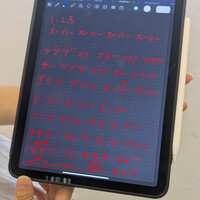Dancers embodied dramaturgy at play
Blog post
Dancers’ embodied dramaturgies are pulsing and moving the choreographic creations in this edition of ArtsCross. By embodied dramaturgies I mean the subjectivities that compose an individual, the cultural, ethic, ethnic, ancestral and movement trainings information that is embodied in every body.
It seems that all four choreographers participating in this edition are interested in the dancer's inputs, stories, imaginations, background, physicality, and movement to compose their works. The subjectivities of each dancer, including the physical and the non-physical, have become important base material for choreographic practice in all four processes. Through different techniques, the choreographers have been directly addressing the dancer's singularities, (physical and non-physical), including movement qualities, training, and creative skills, to create scores that become the rough material they begin to work with.
Even though this material has already begun to deform and disintegrate throughout the creative process – as I have been observing – the use of individual subjectivities as a groundwork of dance making brings a nuance of humanity (or human concerns) to the works.
Even though my observation only began on the second week of rehearsals, which means I missed the beginning of the processes where materials were gathered to start the creations, I was still able to observe some collection of dancer's movement scores in the first day of the second week. Some examples are:

Anh Nguyen, choreographer from Hong Kong introduced tasks to guide the dancer's improvisations in solos and duets, generating movement material with which he began to compose with.
Tung I Fen, choreographer from Taiwan, collected memories from the dancers. Their first remembrance of having a body, what would this be? This material evolved into scores that the choreographer composes with.
Alethia Antonia, choreographer from the United Kingdom asked the dancers to write down about the histories and identities that their bodies hold, also using their own favorite songs to inspire their improvisations, which became material for composition.
Tsui Shang, choreographer from Taiwan used biometrical information of dancers, including their size, height, skin color. She also collected their impressions and physical expression related to beautiful and ugly bodies, that became materials that she worked with.
All these physical and non-physical subjectivities were organised into individual and collective scores that were constructed and deconstructed by the choreographers.

This second week, the choreographers worked with these scores, adapting the dancer's inputs into their own movement styles and choreographic thinking. The singularity of the choreographer's style shapes the scores into their movement language, merging individual dramaturgies into collective moving discourses. This mélange builds the unique movement dramaturgy of the piece, revealing an inter-generational (young recent-graduates, and established choreographers) and intercultural (considering the combination of the cultural background of the participants, both choreographers and dancers) combination of style and subjectivities.

On a side note, as a pedagogue who focusses on the teaching and learning of professional dancers, these processes make me reflect on the importance of drawing dancers attention to the relevance of nurturing their own embodied dramaturgies (creative and improvisational skills) as part of their development as movement artists. If choreographic processes from three different territories, and four different styles, all began, materially speaking, from the embodied dramaturgy of the dancers, this reveals the importance of nurturing these dramaturgies as part of a scheme of performer training.
Posted by

Melina SCIALOM

